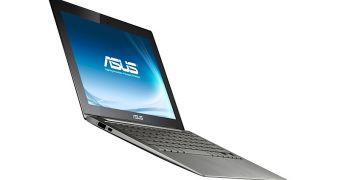Despite all the complaints and requests on notebook makers' part in regards to the pricing scheme of the ultrabook laptop type, Intel seems to be adamant in its decision to not let their CPUs sell for less than its plan entails.
The Ultrabook notebook concept was one that definitely gathered some praise when it was first introduced, being an idea for super-thin PCs capable of rivaling tablets in compactness even while including a physical keyboard.
Unfortunately, there was a highly notable disadvantage to the whole plan, namely the actual price that such units are set to average at.
Basically, Ultrabooks were, and apparently still are, expected to sell for around $1,000, in no small part owed to the pricing scheme of the CPUs.
Notebook makers did request from the Santa Clara, California-based company that it sell the chips for 50% less.
As one may or may not have expected, the chip giant refused to do so, agreeing to just 20% marketing subsidies for the Core i7-2677 (US$317), Core i7-2637 (US$289) and Core i5-2557 (US$250) and, even this, to first-tier vendors only.
According to the report that Digitimes published on this matter, Intel wants to ensure that its leading position in the supply chain is maintained.
More precisely, its gross margin might not stay in the 60% range if it does agree to the price cut, especially now that some regions of the world are still in troubled times.
Meanwhile, notebook makers must face the fact that ultrabooks just might not be that profitable if they fail to strike some sort of compromise. The fact that ultrathin screens, expensive lithium polymer batteries and other light components need to also be implemented doesn't help matters.
Whether or not this initiative meets the same fate as the Atom Z670 tablet CPU+SM35 chipset platform (the price of US$95 made it fail to pose a big threat to the $20 Arm-based NVIDIA Tegra 2) remains to be decided.

 14 DAY TRIAL //
14 DAY TRIAL //